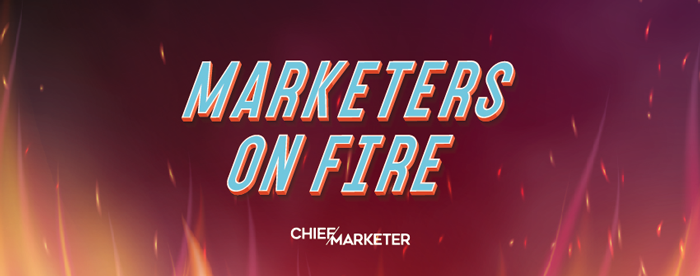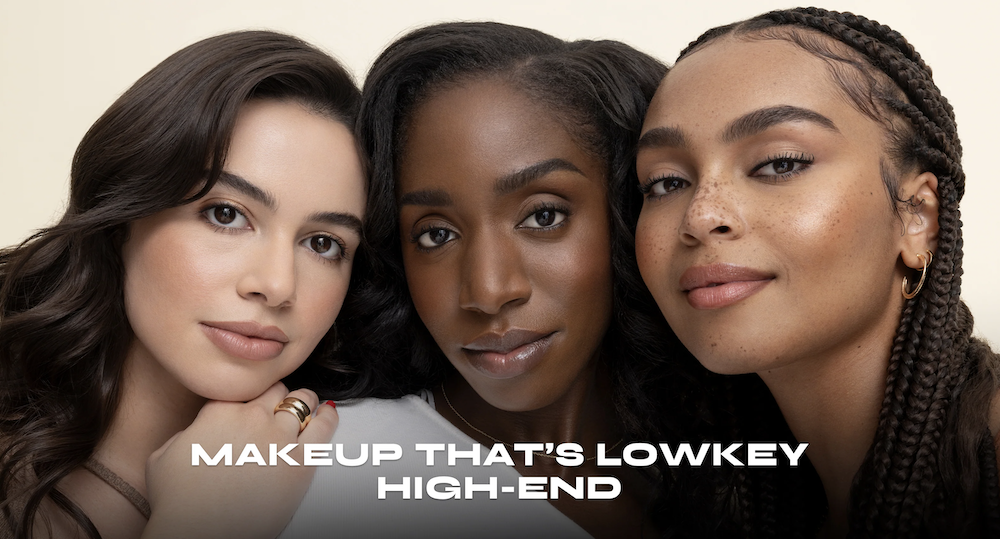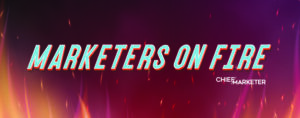
“I constantly tell my team that failure is okay. Not everything is meant to succeed. And if you don’t try something, you’ll never know. Giving permission to test and learn or test and fail has to be part of your culture. Because otherwise, you create a culture of being scared all the time.”
—Jeremy Lowenstein, CMO at Milani Cosmetics
Normalizing a culture that’s not adverse to failure has helped Milani Cosmetics score 10 consecutive quarters of growth and more than $200 million in sales last year. Indeed, for a 23-year-old indie brand competing with larger companies with big budgets and sizeable marketing teams, that’s a key component of the secret sauce. So is operational agility, authentic creator partnerships and an always-on approach toward social trends in the mass color market.
We spoke with Lowenstein about his marketing philosophy, successful social media campaigns, democratizing prestige beauty and fostering a culture built on agility.
Chief Marketer: How has marketing strategy and initiatives contributed to Milani’s recent success?

Jeremy Lowenstein, CMO at Milani Cosmetics: A lot of people don’t realize that we are a 23-year-old brand. When we started in 2001, the purpose of the brand was twofold. One was to democratize prestige, luxury beauty. The founders had this philosophy: why do you have to pay $55 for a foundation when we can just strip back the packaging and maintain product quality? Why can’t we democratize that? Second, the original premise was to design a color cosmetics line for Black women because they felt they were the underserved in the mass beauty market.
Fast forward to today, and part of why I believe that we are growing at the rate which we are doing—we’ve had 10 consecutive quarters of growth now—is that both of the brand’s purposes are even more relevant today than in the past. Beauty consumers are recognizing that they don’t have to pay the 50 to 70 dollars for a beauty product. They can spend the $13 or $14 without sacrificing quality and still have a brand that they’re proud to wear. This concept of a “dupe” culture is fascinating, and that’s really been created by the consumer community.
CM: Do you consider Milani a “dupe” brand, meaning a producer of less-expensive imitations?
JL: I don’t say that Milani is a dupe brand because our product architecture and our product innovation is created in the same labs as these prestige brands. I’m seeing and formulating around the same time that these other brands are, and I just happen to be coming out with the product around the same time. Anyone who works in the space knows that it takes 12 to 18 months to really formulate a high-quality product. So we’re relevant in that consumers are willing to trade down, but not relinquish on quality.
Second is on table stakes for an inclusive brand. Over the past five to 10 years, brands have been playing catch up in showcasing a broader range of shades in their portfolio. And this has been part of Milani’s ethos since day one. We’re now at the size where we’re able to talk about it, and TikTok has helped really amplify that message. We have 45 shades of foundation. We have 18 shades of concealer.
But we don’t stop there. A lot of our product development is also done on different lip tones. People forget that people with different melanin levels also have different lip colors. So when you do nude lipsticks, how does that play on different lip colors, and also, what’s the level of pigment that you put into blushes? Our blushes show up on all skin tones. A lot of brands will use lower levels of pigment, because yes, they’re very beautiful and they’re fine, but if you have a darker skin complexion, they’re not going to show up on you. I think all of that combined, from why the brand was started to social media helping to amplify our message, has made the brand resonate in a much larger way today, helping drive and catapult the brand success.

CM: What are some social media tactics that have worked for you?
JL: TikTok, for most brands today, has served as a bullhorn. Obviously, the algorithm allows for more authentic conversation and video content. When TikTok was really scaling itself during Covid, you could see the rise in brand awareness for Milani. But the way we’ve been able to tap into that community is with the consumers who are out there, making those one-to-one connections, bringing creators into the fold, but also as an indie brand, leaning into conversations already happening.
CM: What’s an example of that?
JL: The Get Ready With Me movement was at one point the largest, most followed hashtag on TikTok. When we started our program, it had over 3 billion video views. We did a Get Ready With Milani organic campaign. We started sending out boxes to influencers tapping into the “five minute face”, “no makeup makeup,” “clean girl summer” [trends] and we said, here are our products that make sense with that concept, and please just tag #GRWMilani. Fast-forward to today, and it’s one of our fastest-growing hashtags—and it’s almost all organic.
We also saw a pushback against digital filters last year. So we did a campaign called “No Filter, Just Milani,” promoting our Conceal and Perfect foundation. I’m a big proponent of not retouching imagery. With all of our imagery and videos, we are able to claim unretouched. My message to consumers is: Forget the digital filters, use Milani and just show up as your best self. The hashtag #nofilterjustmilani campaign last year started to resonate and build conversations. So, I use social to lean into conversation and insert the brand into that. We’re within the top 10 of makeup and mass, and we’re the only indie brand. Everybody else is part of a portfolio company or publicly traded. So we have to be small and scrappy and be smart about how we lean in.
CM: About that: How do you manage to compete with these larger companies? Do you use celebrities or only micro-influencers?
JL: All micro. Because we are small—less than 80 people in the whole company—it mandates that we are agile. We are all involved. It’s a roll-up-your-sleeves culture. But it allows us all to be more personable. So when we think about these relationships with creators and consumers, my team spends a lot of time talking to them, whether it’s lunches, coffees, dinners. We have agency partners, but those relationships are one-to-one, and [we’re] building that authentic conversation and turning them into a community.
We also help facilitate connections between creators, [which] has built these micro-communities of “Milani Makers.” And that helps amplify the brand message in a more authentic way. We have partnered with creators who are now mega-stars—like the McKayla’s of the world, the Rocio’s—before they were really big. Because they started talking about us, we would send them product, have those conversations—and they still talk about us.
We have this benefit of having worked with the big guys, but also finding great talent. We don’t really bring models into campaigns. I bring creators to help tell stories on and off screen. And some of those creators who are now starting to come into their own right have been picked up by some of the larger prestige brands. And we were the ones who found them and started giving them their career. They will continuously come back to us and work with us because we facilitated those conversations and that relationship.
CM: How do you find the creators you work with?
JL: Some of these creators we find through UGC. They could be consumers and can potentially become creators in their own right. The definition of a creator for me is anybody who’s creating content. It doesn’t have to mean a huge following. I like to look at those people and say, Is this a potential for us? Do we like their content? Are they authentic to the brand?
The challenge with TikTok today is that [you need to be] actually tagged somewhere, in a caption. I’ll give you an example where we didn’t know about content that was posted where I actually saw an impact on our business. Last year we launched a tubing mascara. We were one of the first-to-mass with our highly-rated lash extensions. Every Tuesday, we have a sales and operations call. We looked at our sales numbers for the week and noticed that our tubing mascara business started to accelerate really quickly… We started digging a little deeper and found a video from The Lipstick Lesbians explaining tubing mascara to consumers, talking about Milani the whole time on their video. But we were not tagged.
So, that video started going viral and driving consumption. We reached out to thank them, and then just started to have conversations. And since then, they have done all of these organic videos for us. What sets us apart from the other mass competitors? These authentic relationships just come, and we don’t even know they’re happening sometimes until someone tells us about it.
@milanicosmetics What makes Milani so special?⭐️ @The Lipstick Lesbians are here to put you on to our high-quality products that are always accessible & available at an affordable price point!🤝Which luxe Milani product is your go-to? #MilaniCosmetics #CrueltyFree #GRWMilani ♬ original sound – Milani Cosmetics
CM: Switching gears to attribution in a more general sense: How is the company dealing with the changes happening in online measurement?
JL: What’s old is new again. I think we all got spoiled as marketers to be able to do attribution. While it’s important to me, it’s not the holy grail. I look at 360 marketing and say, what’s the right content with the right message at the right time of their journey? And that can be everything from in-store and point-of-sale to billboards to the organic pieces that we put out on social to the events that we do with both consumers and creators. I don’t believe that there is one piece of content or one thing that you can say drove that purchase.
You have to always be on, always be top of mind. When I studied marketing, they used to say a consumer becomes “aware” of your brand if they’ve been exposed three times. I’ve now read studies that it’s upwards of anywhere from 11 to 20 times—because there’s so much out there. There’s a need to be everywhere at all times, but be relevant. And that is a mix of brand-led content, UGC, paid content, all of those different pieces.
So, going cookieless is complicated. I think it scares a lot of pure-play D2C brands. Milani is truly omnichannel from a shopping perspective, because we do have Ulta, Walmart, Target, Walgreens and all the way down. But then we have Amazon D2C. Amazon is still a search engine. So if they can find us there, great. If they use that to look at reviews of a product and they go to Ulta, great. I just want to be where she is and where they’re looking for the brand.
CM: What are the other ways in which your company is able to compete with larger brands?
JL: What allows us to compete with the big is actually being small. We are able to make decisions quickly. When we think about our leadership team, there are six of us, and we get to sit around the table and we make the decisions really fast. Whereas at these big companies (I’ve been at them) you have a lot of layers to go through… the interconnectivities between the different departments, the different countries, etc. It can take a bit of time to bring something to market. If we see something is working, we can turn it on and turn it off really quickly. If we want to lean into a trend that we’re seeing, I just go tell my team, “go.” Or they come to me and say, Hey, we’re seeing this. It’s the blessing and the curse of being a smaller team.
Part of our secret sauce as a leadership team is that we’ve all been in this type of a business before—in the big companies—and now translate it to small. We understand the intricacies of the mass makeup world. It’s a hyper-complex category to play in, but we know where to take barriers away from our team and also what’s needed to drive structure and proper decision-making to allow for best results. I also make sure that I constantly tell my team that failure is okay. Not everything is meant to succeed. And if you don’t try something, you’ll never know. So giving permission to test and learn or test and fail has to be part of your culture. Because otherwise, you create a culture being scared all the time.
CM: What are some examples of processes that require structure? And what can be a bit more fluid?
JL: Understanding how to read a P&L, and how to make decisions when you’re launching product. What comes out of your planogram? The mass color world is super complex, especially when you go into store. Everything has a tray and a fixture. If you’re going to take a product out, what are you putting in? Is it going to generate potentially more revenue than what you’re taking out? Because sometimes you’re landlocked, where you sit within your space—unless you’re working with retailers to expand your footprint. Obviously, a lot of brands are always trying to do that, but you have to play the game and have this mindset of, “this is my island.” Is it working as hard for me as possible with the assortment I have in there?
It’s giving the team the “construct” around what that looks like, and having the open forums to discuss the product mix, the pricing, the margin… But it’s not about putting handcuffs on people. It’s about having free flow discussion and then walking away united in a decision and just driving.
CM: What is the brand is doing moving forward? Are there specific areas of growth?
JL: We’re in full distribution in the U.S., and we’re always looking at how we continue to expand our footprint in stores. We are the second fastest growing brand in mass color. So, it’s about working closely with our retail partners, whether it’s Ulta or Walmart or Target, on continuing to demonstrate our ability to grow. And then it’s making sure that we are taken seriously as a true competitor in the mass color business. Now, we’re the number seven player. How do we continue to grow our footprint?
I also oversee international. UK and Australia continue to be growth markets for us, as well as other up-and-comers like Mexico. Knowing that 30% percent of our consumers are Latina, we have potential resonance within Central and South American markets. I’m constantly keeping my ear to the ground on what is happening in the social universe. Obviously, everyone’s talking about the fate of TikTok. It is quite interesting to see TikTok running ads on television to save TikTok.
It’s having those conversations with my business partners, agencies, my internal team. How do we remain nimble? And even talking to our creators, [asking them], where else are you testing and learning on platforms and thinking about marketing channels? That’s one of the most exciting and challenging things about being a marketer today. You have to be able to pivot quickly and keep your finger on the pulse of what is happening out there, because you have to be ready to make a move at a moment’s notice to remain relevant and top of mind with your consumer.








